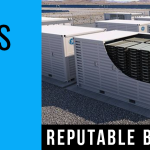
AS THE FUKUSHIMA disaster unfolded in Japan, the Blue Lake Rancheria, in Northern California, was dealing with its own crisis. Several miles inland and uphill from the Pacific Ocean, the 100 acres of tribal land had turned into a haven for roughly 3,000 coastal dwellers who were fleeing a feared tsunami from that same earthquake. A huge line of cars assembled at the Rancheria’s gas station; one young woman ran in circles, holding her baby and weeping.
Local inundation ended up being relatively minor. But the Blue Lake Rancheria was shaken. “That was an eye-opener,” says Jana Ganion, sustainability and government affairs director at the Rancheria. “We need to prepare for the disasters that are reasonably foreseeable here.”
Tsunamis for one. But also the massive earthquake that’s going to devastate the Northwest. And California’s annual wildfires, made ever more vicious by climate change. These disasters all have one thing in common: They threaten to cut the Blue Lake Rancheria off from the grid for days, maybe weeks. Tucked behind the state’s “Redwood Curtain,” the Rancheria’s rural placement affords it few access points, and roads may be inaccessible in the aftermath of a disaster.
The answer was to help pioneer what could be the future of energy in California and beyond. Working with scientists at the Schatz Energy Research Center at nearby Humboldt State University, and the local utility PG&E, the Rancheria developed its own solar-powered microgrid, allowing it to disconnect from the main grid and run off Tesla battery power. The setup powers six buildings, including a 55,000-square-foot casino and 102 hotel rooms—over 140,000 square feet of total building space.





